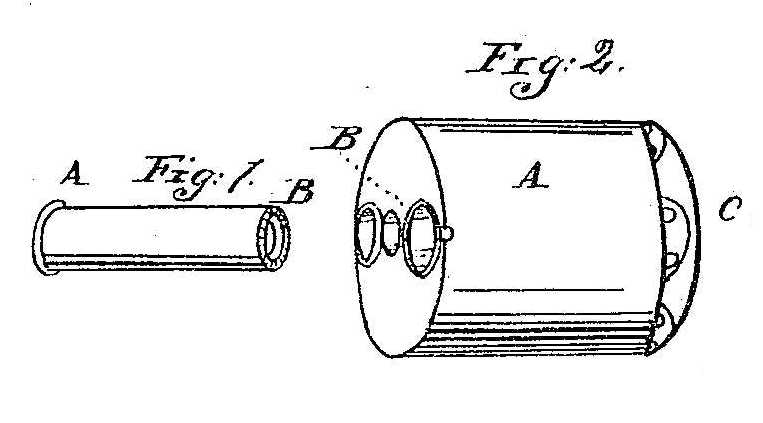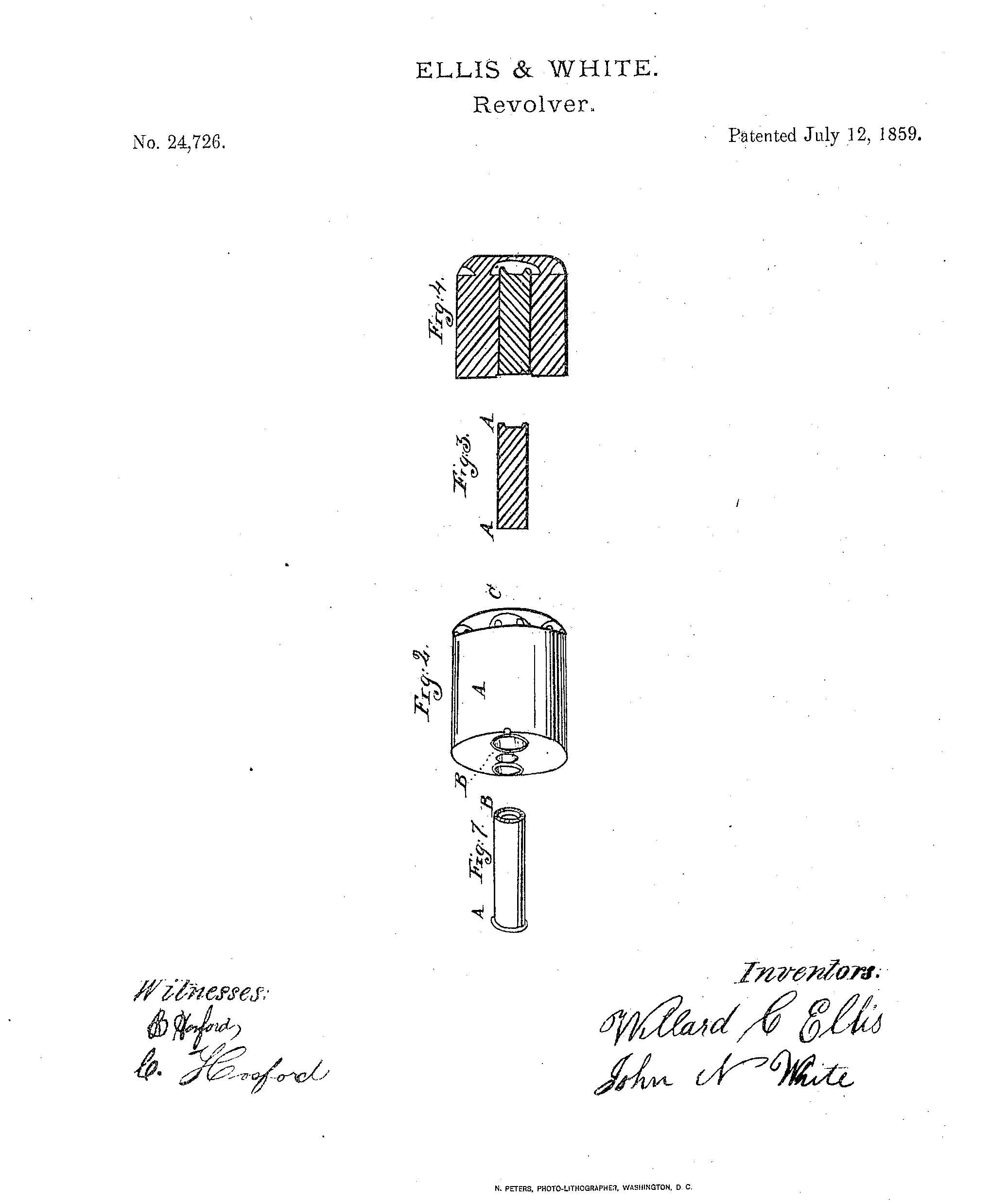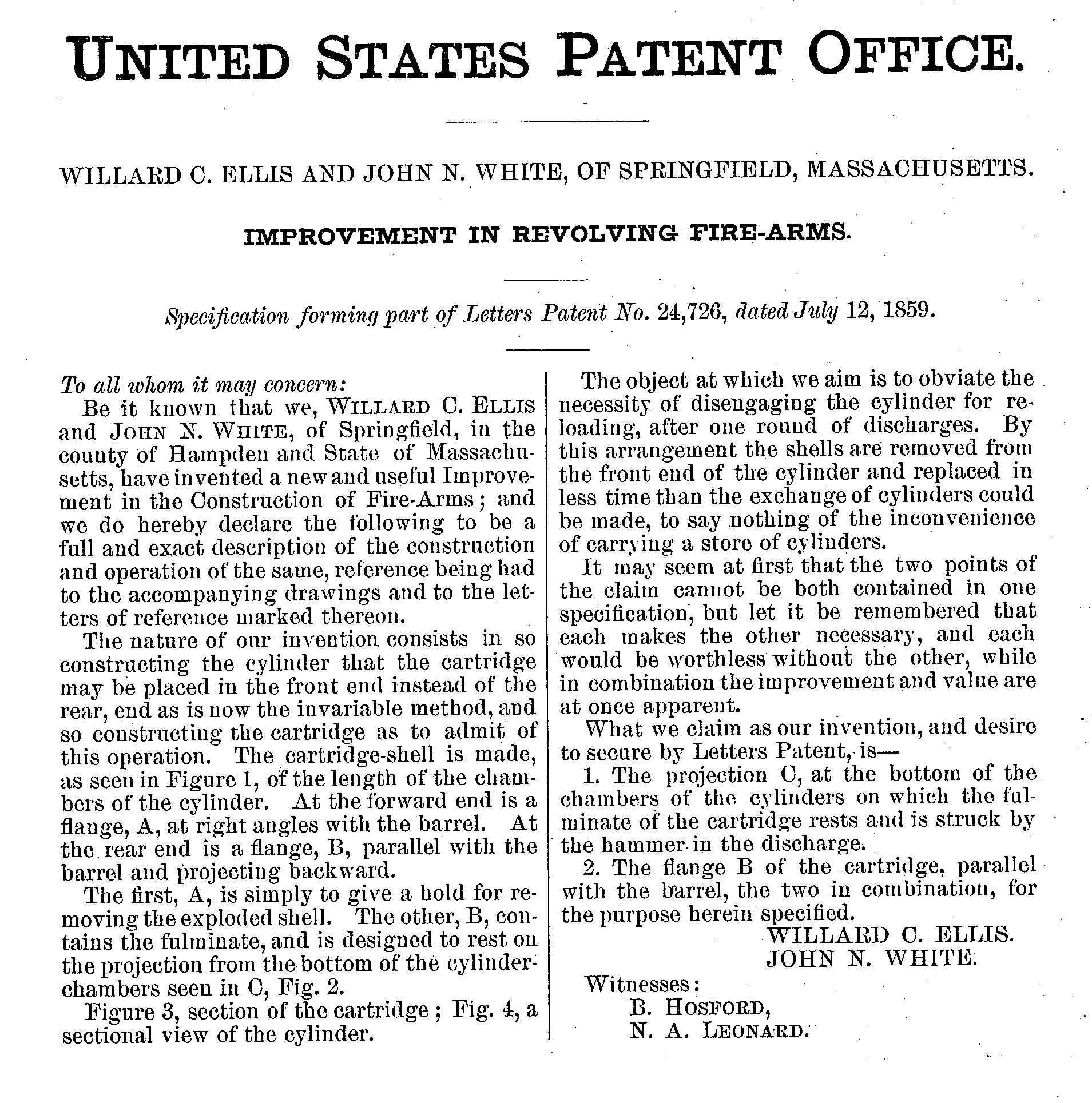|
THE CARTRIDGE COLLECTOR'S EXCHANGE |
| Contents
Cartridge
Lists
Prior Picture Pages:
for April thru June 2011
*September
2012
Links to Other Sites
Cartridge Collectors Organizations:
Auctions:
Books:
Other Collector's Sites:
|
Home of the Old Ammo Guy's Virtual
Cartridge Trading Table
Picture Page February 2013 A look at the 'cup-primed' cartridges........ When Smith & Wesson obtained the rights to the Rollin White bored-through cylinder patent on November 17, 1856 (click here for a discussion of the Rollin White patent), it essentially gave them exclusive control over meaningful revolver development in the United States for the next 12 1/2 years. A number of other gun makers attempted to cash in on the growing demand for revolvers that used standard rim fire cartridges, but all were forced to stop production or to market their guns through Smith & Wesson after they were successfully sued for patent infringement by Rollin White.
Other creative inventors worked on developing revolvers that did not infringe on the Rollin White patent, but to do so required that their revolvers not have bored-through cylinders. As a result, several unique cartridges were developed in the process of making these new revolver designs marketable. While the resulting patent applications were submitted as 'improvements in repeating firearms' or 'improvements in metallic ammunition', few offered any meaningful improvements at all. The revolvers tended to be more complicated and cumbersome to use, and the ammunition was less reliable, as attested to by their generally poor acceptance by the shooting public. That these patent evasions were doomed certainly is obvious in hindsight, considering the fact that the practicality and simplicity of the bored through cylinder has not been improved upon for a revolving firearm to this day. However, this brief period of alternative revolver design produced a number of unusual guns and cartridges that add to the mystique of collecting and, fortunately for collectors, are in most cases not too difficult to find. The first and one of the more popular among the evasions was Willard Ellis and John White's revolver, for which they received U.S. patent 24,726 on July 12, 1859.
The patent is for the revolver,
or more precisely for the cylinder of a revolver, which was i
The revolvers were manufactured beginning in the early to mid 1860s by the Plant's Manufacturing Company of New Haven, Connecticut, and The Eagle Arms Company of New Your. They were made in two sizes, with Eagle producing approximately 20,000 of the small frame pocket revolvers in .28 and .30 caliber, and Plant producing approximately 1,200 of the large frame 'Army' revolvers in .42 caliber in three different models over its production life. With the expiration of the Rollin White patent and, more importantly, Smith & Wesson's choke hold on revolver manufacturing in the United States, the resulting flood of new, more practical revolver designs in both rim fire and center fire killed the demand for the patent evasion revolvers. Production of the Plant and Eagle cup- primed revolvers probably ended in the early 1870s. .
all of the cup-primed cartridge variations in my collection, including from the left an unheadstamped .28 caliber, three .30 caliber variations (raised P headstamp, raised A headstamp and unheadstamped), and two unheadstamped .42 caliber variations, the first with a heavy case cannelure and the other with a light cannelure. None of the cartridges shown have the flat cup base, which was used only for the earliest production cartridges. In addition, the .30 cartridges seem to be the only ones that are found with headstamps.
.
. . . . . . . . . . . . . . . . .
. .
. . . . . . . . . . . . . .
. . . . .
|

 ntended
to be loaded from the front in order to circumvent Rollin White's patent on
the bored through cylinder. The cartridges for this revolver had a cupped
base, and were fired by the hammer striking the inside edge of the cup.
These cartridges becam known as cup-primed cartridges. The patent drawing includes the cartridge in Figure 1,
showing it's flat based cup and flanged case mouth, ready to be inserted
into the chamber from the front of the cylinder. I have included the
complete patent drawing and specifications below.
ntended
to be loaded from the front in order to circumvent Rollin White's patent on
the bored through cylinder. The cartridges for this revolver had a cupped
base, and were fired by the hammer striking the inside edge of the cup.
These cartridges becam known as cup-primed cartridges. The patent drawing includes the cartridge in Figure 1,
showing it's flat based cup and flanged case mouth, ready to be inserted
into the chamber from the front of the cylinder. I have included the
complete patent drawing and specifications below. 
